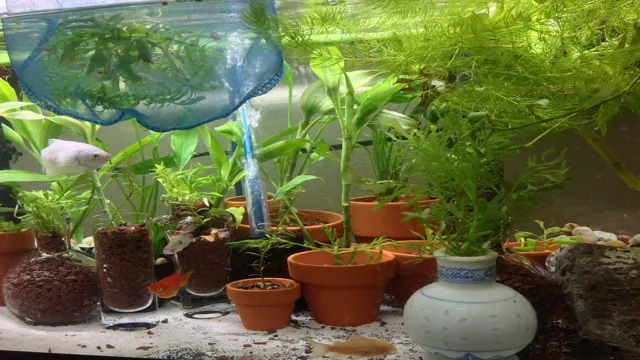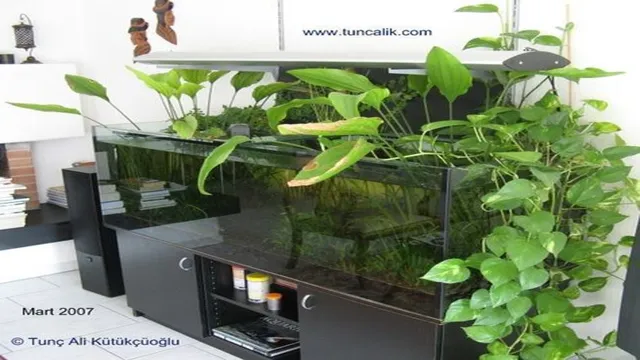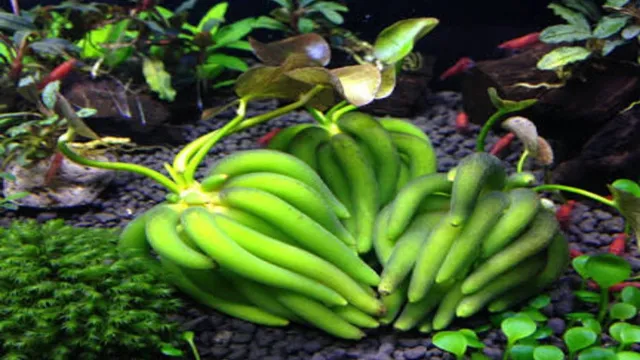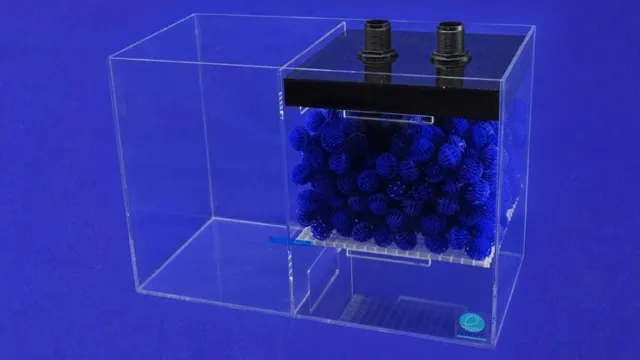How to Grow Aquarium Plants at Home: A Beginner’s Guide to Healthy and Vibrant Plant Life

Are you tired of purchasing pricey plants for your aquarium that promptly wilt and die? Do you want to grow lush, healthy aquatic vegetation at home without busting your bank account or spending all your free time setting up and maintaining an elaborate system? Look no further than this guide for growing aquarium plants at home. Growing and maintaining aquatic plants in your aquarium not only enhances its beauty but also promotes a healthy environment for your fish. But with so many options available and so much conflicting advice, it’s easy to feel overwhelmed and unsure where to start.
That’s where this guide comes in – we’ll break down everything you need to know to successfully grow aquarium plants. From choosing the right type of plants for your aquarium and lighting requirements to fertilizers and water quality, we’ll cover every aspect of growing healthy and thriving plants. This guide will provide tips and tricks for setting up a low-maintenance yet effective planted aquarium that will not only save you money in the long run but also impress all visitors.
Whether you are a seasoned aquarium expert or a newbie to the aquatic world, this guide is for you. Get ready to turn your aquarium into a thriving, beautiful ecosystem with healthy, lush plants that your fish will love.
Why Grow Aquarium Plants
Aquarium plants are not only aesthetically pleasing, but they also offer numerous benefits to your aquatic ecosystem. Properly growing aquarium plants at home can help regulate water quality, provide a source of food for fish and invertebrates, as well as reduce algae growth by competing for nutrients. In addition, live plants can also provide shelter for shy or young fish, contributing to a healthier and more natural environment.
When it comes to growing aquarium plants, it’s important to consider factors such as lighting, substrate, fertilization, and CO2 supplementation. With the right conditions and care, you can achieve beautiful, thriving aquatic plant life and reap the benefits of a healthy and balanced aquarium. So, why not give it a try and enhance your aquarium experience by growing your very own aquarium plants?
Benefits of Aquarium Plants
Aquarium plants provide a plethora of benefits that make them an essential component of any aquarium. One of the primary reasons to grow aquarium plants is their ability to oxygenate the water naturally. These plants transfer carbon dioxide to oxygen, which is vital for the survival of fish and other aquatic organisms.
They also absorb nitrates and other harmful debris, improving water quality and preventing fish from falling ill. Additionally, aquarium plants create a more natural environment, mimicking the natural ecosystem of aquatic life, and providing them with places to hide and play. A well-planted aquarium is not only aesthetically pleasing but also nurturing for its inhabitants.
So, if you own an aquarium or are considering having one, adding aquarium plants should be at the top of your to-do list. They are easy to grow, require minimal maintenance and offer a gamut of benefits that significantly enhance the overall experience of owning an aquarium.

Choosing the Right Plants
When it comes to growing aquarium plants at home, the first step is choosing the right species. Factors such as the lighting, water temperature, and pH level of your tank can determine which plants will thrive. It’s important to research the specific needs of each plant you’re considering to ensure you can provide them with the ideal environment.
Some popular options for beginners include Java Moss, Anubias, and Cryptocoryne, as these plants are relatively low-maintenance and can tolerate a range of conditions. Remember, each plant’s growth rate, size, and appearance can also play a role in your decision. Overall, taking the time to carefully select the right aquatic plants for your tank can set you up for a successful and visually appealing aquascape.
Factors to Consider
When it comes to choosing the right plants for your garden, there are a few factors you should consider. Firstly, think about the climate in your area and choose plants that are well-suited to it. You don’t want to waste your time and money on plants that won’t be able to thrive in your environment.
Secondly, consider the amount of sunlight your garden receives and again, choose plants that are compatible with it. Some plants require full sun, while others can tolerate shade. Thirdly, think about the soil in your garden.
Different plants require different types of soil, so ensure that you choose plants that will be able to grow in the soil you have. It’s also important to consider the size of the plants you choose, as you don’t want them to become overcrowded and compete for resources. By taking these factors into consideration, you can ensure that you choose the right plants for your garden and set it up for success.
Common Aquarium Plant Species
When it comes to choosing the right plants for your aquarium, it’s important to consider a few key factors. First, think about the size of your tank and how much space you have available for plants. Some common aquarium plant species, like Anubias and Java Fern, can thrive in small or large tanks, while others, like Amazon Sword and Vallisneria, require more space to grow.
It’s also important to consider the lighting and nutrient needs of different plant species. For example, plants like Cryptocoryne and Hornwort can do well in low light environments, while others like Dwarf Hairgrass and Ludwigia require brighter light. Don’t be afraid to experiment with different plant species to find the right ones for your aquarium.
Remember that a healthy and vibrant aquatic plant ecosystem can not only enhance the appearance of your tank but can also provide benefits for your fish, such as improved water quality and oxygenation.
Setting Up Your Aquarium
If you’re looking to set up an aquarium in your home, one aspect you may want to consider is growing live plants within the tank. Not only can these plants add aesthetic appeal to your aquarium, but they also serve important purposes in maintaining a healthy ecosystem for your fish. To start growing aquarium plants at home, you’ll first need to select the right lighting and substrate for your tank.
Different types of plants have varying lighting needs, so it’s important to research which ones will thrive in your specific tank setup. Additionally, selecting the proper substrate (such as soil or sand) can help promote healthy root growth for your plants. Once you’ve made these selections, you can begin to add plants to your aquarium and monitor their growth over time.
Don’t forget to regularly prune your plants and perform routine maintenance to ensure their continued health and vitality. By incorporating live aquarium plants into your setup, you can create a beautiful and functional environment for your aquatic pets.
Preparing Your Tank
Preparing your aquarium for your fish should be done with careful consideration and planning to ensure a healthy and stress-free environment for your aquatic pets. When setting up your aquarium, ensure you have all the necessary equipment, including a filter, heater, and lighting system. The type of substrate you choose for the bottom of your tank is also essential, as it provides a surface for beneficial bacteria colonization.
It’s also vital to choose the right types of plants and decorations to create a natural-looking environment that provides your fish with plenty of hiding places and areas to explore. Before adding any fish, it’s important to cycle the tank to establish a stable nitrogen cycle, which allows good bacteria to break down toxic compounds, ensuring the health and safety of your fish. Overall, preparing your aquarium is a crucial step in providing your aquatic pets with a comfortable and healthy living space.
Choosing a Substrate
When it comes to setting up your aquarium, one of the most important decisions you’ll make is choosing the right substrate. This is the material that you’ll layer on the bottom of the tank, providing a foundation for your aquatic plants and serving as a home for beneficial bacteria. The most popular types of substrates include sand, gravel, and soil.
Each has its own unique benefits and drawbacks, so it’s important to choose the substrate that best fits your needs. Sand is great for bottom-dwelling fish and can be easier to clean, but it can also compact over time and limit plant growth. Gravel comes in a variety of colors and sizes, making it easy to create a customized look for your tank, but it can be more difficult to clean and may trap debris.
Soil is a nutrient-rich option that can promote healthy plant growth, but it requires more maintenance and may cloud the water temporarily after setup. Ultimately, the substrate you choose will depend on your personal preferences and the needs of your aquatic inhabitants.
Placing and Arranging Plants
When setting up your aquarium, it’s important to consider the placement and arrangement of your plants. Not only will this add aesthetic appeal to your tank, but it will also provide benefits for your fish. Placing live plants in your aquarium can help create a natural and healthy environment for your fish to thrive in.
When arranging your plants, consider the size and shape of each plant, as well as their growth patterns. Some plants may need to be trimmed or pruned regularly to prevent them from taking over the tank. You should also consider the lighting requirements of each plant and place them accordingly.
Adding plants to your aquarium not only benefits your fish, but it also adds a calming and peaceful ambiance to your space. So, take the time to carefully place and arrange your plants to create a beautiful and healthy environment for your aquatic pets.
Maintaining Your Aquarium Plants
Growing aquarium plants at home can be a fulfilling and fun activity, but it’s important to maintain their health for long-term success. The first step is to ensure that the plants have appropriate lighting, temperature, and nutrients. LED lights can be an efficient choice for lighting while a temperature between 75-80°F is best for most plant types.
Nutrients can be provided through substrate fertilizers or liquid fertilizers added to the water. It’s also important to regularly trim and prune the plants to prevent overgrowth and promote healthy growth. Pay attention to any signs of disease or pests and address them promptly to prevent spread to other plants or fish.
With proper care and attention, your aquarium plants can thrive and bring beauty to your underwater world.
Lighting Requirements
When it comes to maintaining a healthy aquarium, lighting is a crucial aspect that must not be overlooked. Plants require light to grow through a process called photosynthesis. Without sufficient lighting, plants will eventually die and begin to decay, wreaking havoc on your aquarium’s ecosystem.
The type of lighting required for plants depends on the type of plant you have, as some require more light than others. Generally speaking, LED lighting is the best option for aquarium plants as it provides the necessary light spectrum without overheating the water. It’s important to note that too much light can be just as harmful as not enough.
Overexposure to light can lead to algae growth, which can suffocate and kill your plants. To find the perfect balance, experiment with different light durations and intensities until you find the sweet spot for your plants. With the right lighting setup, your aquarium plants will thrive and create a beautiful underwater oasis.
Fertilization
Fertilization is an essential aspect of maintaining your aquarium plants and ensuring their optimal growth. One of the most common nutrients required by plants is nitrogen, which is often found in fish waste and decaying organic matter. However, it’s important to supplement this with fertilizers specifically designed for aquatic plants to ensure they get all the necessary nutrients.
When adding fertilizers, be sure to follow the instructions carefully to avoid over-fertilization, which can lead to algae blooms and harm your aquatic life. Additionally, it’s important to monitor the levels of nutrients in your aquarium, especially nitrate and phosphate, to prevent excessive buildup, which can also lead to algae growth. By providing the right amount of nutrients through fertilization and monitoring the levels in your aquarium, you can help your plants thrive and provide a healthy environment for your fish.
Proper Water Conditions
Proper aquarium water conditions are crucial to the health and growth of your aquarium plants. Water that is too hot or cold can be detrimental to the growth of your plants and can lead to them dying. The ideal water temperature for most aquarium plants is between 72-82°F.
Additionally, pH levels should be around 5-5 for optimal plant growth.
It is also important to have good water circulation to ensure that nutrients are distributed evenly throughout the aquarium. A well-functioning filtration system can help remove toxins from the water, which can be harmful to the plants. Adding CO2 supplements can also help promote healthy plant growth.
Overall, it is important to monitor the water conditions in your aquarium and take necessary steps to maintain healthy conditions for your plants to thrive.
Pruning and Maintenance Tips
Maintaining your aquarium plants is essential for keeping them healthy and thriving. One of the most important tasks is pruning, as it helps prevent overcrowding and maintains a neat and visually appealing appearance. It’s best to use a pair of sharp scissors to trim back any dead or yellowing leaves, or any stems or branches that are growing too tall or bushy.
Additionally, regular water changes and the use of liquid fertilizers can provide essential nutrients to your plants and promote healthy growth. As you maintain your aquarium plants, it’s important to observe them closely and adjust your care as needed. By following these tips, you can create a beautiful underwater garden that enhances the beauty and health of your aquarium inhabitants.
Conclusion
In summary, growing aquarium plants at home requires patience, dedication, and a touch of creativity. But with the right tools and techniques, anyone can cultivate a thriving underwater garden that not only beautifies their tank but also nourishes their aquatic pets. So grab your gardening gloves, get your hands dirty, and watch your plants flourish.
And remember, a little extra TLC goes a long way in creating a vibrant, healthy ecosystem for both your fish and foliage. Happy planting!”
FAQs
What are some easy aquarium plants to grow at home?
Some easy aquarium plants to grow at home are Java fern, Anubias, Cryptocoryne, and Java moss.
What type of substrate is best for growing aquarium plants?
A nutrient-rich substrate like Aquasoil or Flourite is best for growing aquarium plants.
How often should I fertilize my aquarium plants?
It depends on the type of plants you have, but generally, once a week is sufficient for most aquarium plants.
Can I grow aquatic plants without a CO2 system?
Yes, many aquarium plants can grow without a CO2 system. However, adding CO2 can help them grow faster and stronger.
How much light do aquarium plants need?
The amount of light required varies depending on the type of plant. Generally, 8-10 hours of light a day is sufficient.
How do I prevent algae growth in my planted aquarium?
To prevent algae growth, make sure your aquarium has balanced lighting, avoid overfeeding your fish, and perform regular water changes.
Can I use tap water to fill my planted aquarium?
Yes, you can use tap water, but make sure to condition it first with a dechlorinator to remove any harmful chemicals.






